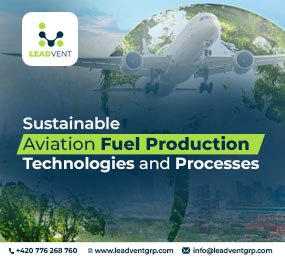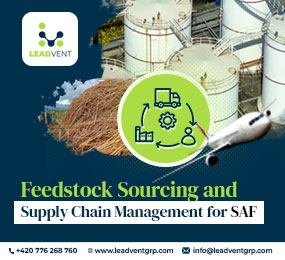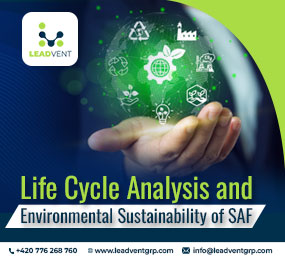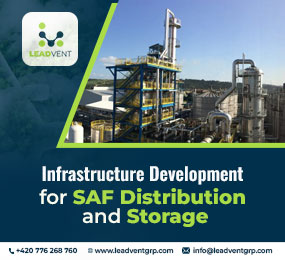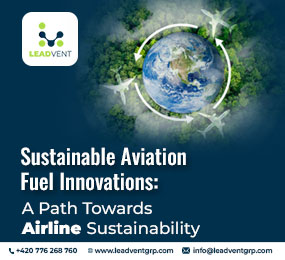The aviation industry faces the challenge of reducing its environmental impact while meeting growing air travel demand. Sustainable Aviation Fuel (SAF) is a game-changer for decarbonization and greener skies. However, its adoption depends heavily on policy and regulation.
This blog dives into SAF certification and regulation, examines challenges, and highlights success stories. For industry leaders, understanding these frameworks is key to adopting SAF and seizing policy-driven opportunities.
Why Policy and Regulatory Frameworks Matter for SAF
Policies and regulations are crucial for fostering the development, production, and adoption of SAF. Without clear policies, industries lack the guidance and incentives to invest in SAF technologies and distribution. Robust frameworks, however, can streamline SAF integration into aviation infrastructure. Key benefits of sound policies include:
- Safety and Standardization: Certification ensures SAF meets safety and performance standards, making it compatible with aircraft engines.
- Environmental Accountability: Policies assess SAF’s lifecycle emissions to drive meaningful carbon reductions.
- Market Stimulation: Subsidies, tax credits, or mandates encourage airlines and fuel suppliers to adopt SAF.
The International Air Transport Association (IATA) states SAF could cut aviation’s carbon footprint by up to 80% over its lifecycle compared to conventional fuels. Strong regulations are essential to achieving this potential.
The Current Regulatory Landscape
SAF regulation differs significantly across regions. The fragmented approach can both motivate and hinder the global adoption of SAF. Below is an overview of key policies shaping the SAF market today:
1. European Union:
The EU has been a leader in SAF regulation through its ReFuelEU Aviation initiative, which sets ambitious mandates requiring fuel suppliers to blend increasing levels of SAF into aviation fuel by 2030. Additionally, the European Green Deal aims to achieve net-zero emissions across industries by 2050, with SAF highlighted as a primary strategy.
2. United States:
The Inflation Reduction Act (2022) introduced a blender’s tax credit for SAF, incentivizing producers to integrate SAF into aviation operations. The Sustainable Aviation Fuel Grand Challenge further sets a target for SAF production capacity to meet 100% of the industry’s fuel demand by 2050.
3. Asia-Pacific Regions:
Countries like Japan and Singapore are investing in SAF production facilities and developing collaborative frameworks. However, SAF mandates are less stringent compared to Europe or the United States, creating inconsistencies in market growth.
Challenges to SAF Certification and Adoption
While SAF offers significant environmental benefits, several challenges remain for widespread adoption:
Cost Competitiveness:
Producing SAF costs 2-4 times more than conventional jet fuel, making it economically challenging for many airlines. Carbon taxes could help long-term, but high upfront costs slow adoption.
Feedstock Limitations:
SAF relies on sustainable feedstock like waste oils, agricultural residues, or algae. Securing enough without impacting industries like agriculture or food supply is difficult.
Infrastructure Gaps:
Many airports lack SAF distribution systems. Better infrastructure is needed for efficient blending, storage, and delivery.
Policy Fragmentation:
Inconsistent global regulations make it hard for airlines to align with SAF mandates. A unified framework is essential for smooth international implementation.
Addressing Challenges Through Innovations
Case Study: Neste’s SAF Pathway
Neste, the world’s leading SAF producer, has successfully partnered with European and Asian airlines by scaling up SAF production. By using waste oils and residues, Neste ensures sustainability while aligning with stringent EU regulations. Their innovative processes reduced SAF production costs, making it increasingly viable for commercial airlines.
SAF in Action at the World Sustainable Aviation Fuel Forum
The World Sustainable Aviation Fuel Forum (February 26–27, 2025, Amsterdam) serves as a dynamic platform to align SAF policies and regulations with technological innovations. Industry leaders, policymakers, and research institutions will convene to discuss key topics like feedstock sourcing, lifecycle analysis, and certification challenges.
The Forum features more than 35 executive speakers and 150 attendees, offering in-depth case study presentations and roundtable discussions focusing on the critical factors for advancing SAF adoption. Workshops will provide actionable insights into market drivers, financing mechanisms, and partnerships crucial to SAF deployment.
Notable speakers include Dr. Anita Sengupta from Hydroplane Ltd and Marco Di Mario, Senior VP of Fuels at Menzies Aviation. Their perspectives will help stakeholders refine their approaches to the SAF ecosystem.
For CEOs, CFOs, and industry leaders, participating in events like the SAF conference is essential to gain clarity on aligning operational strategies with global climate goals.
FAQs on SAF Certification and Policy
Q1. What are the key certification standards for SAF?
SAF must comply with international standards set by organizations like ASTM International (e.g., ASTM D7566) to ensure compatibility with jet engines and operational safety.
Q2. How do SAF life cycle emissions compare to conventional fuels?
SAF’s lifecycle emissions are up to 80% lower than traditional aviation fuels, depending on the feedstock and production process used.
Q3. Will SAF adoption impact airfares?
Initially, SAF may increase operational costs, potentially influencing ticket prices. However, with economies of scale, infrastructure improvements, and regulatory incentives, prices are expected to stabilize in the future.
Q4. How can airlines benefit financially from SAF adoption?
By adopting SAF, airlines can earn carbon credits, comply with emissions mandates, and appeal to environmentally conscious travelers, driving long-term profitability.
Q5. What role do collaborative partnerships play in SAF projects?
Collaboration between airlines, fuel producers, and policymakers helps overcome barriers like infrastructure limitations, cost optimization, and supply chain management, making SAF adoption more viable.
Paving the Way with Policy-Driven Progress
Policy and regulatory frameworks for SAF certification and adoption are the cornerstones of a greener aviation industry. By fostering transparent standards, supporting feedstock diversification, and incorporating financial incentives, policymakers can catalyze the SAF revolution.
Business executives and decision-makers must recognize SAF development as both an environmental responsibility and a competitive advantage in a market shifting towards sustainability.
Stay ahead of the curve and learn how to integrate these innovations into your business strategies. Attend the World Sustainable Aviation Fuel Forum 2025 to gain invaluable insights directly from industry leaders. Secure your spot today and lead your organization towards a sustainable future.


